THE BELUGAS THAT VISIT ARCTIC WATCH
Featured
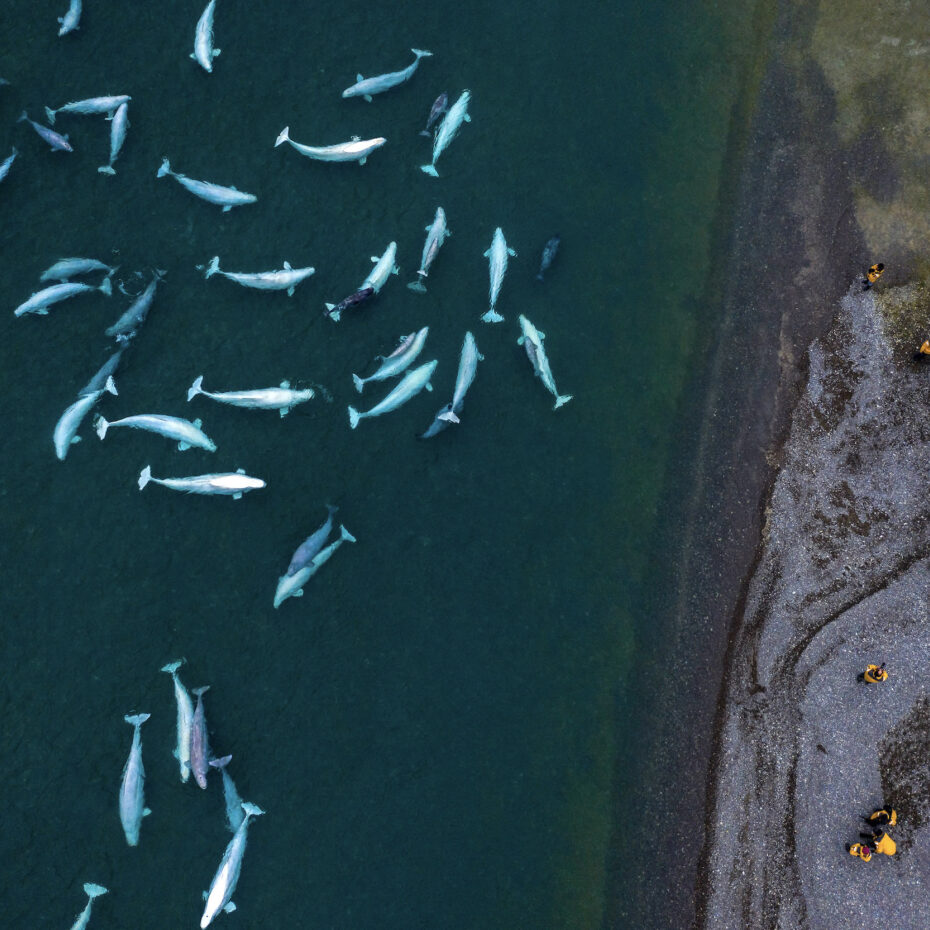
Featured
October 21, 2020 | Arctic Watch
Every year at Arctic Watch, we're privileged to see several thousand whales congregate in Cunningham Inlet. One of the last beluga nurseries on the planet, these whales display behavior that can’t been seen anywhere else on earth.
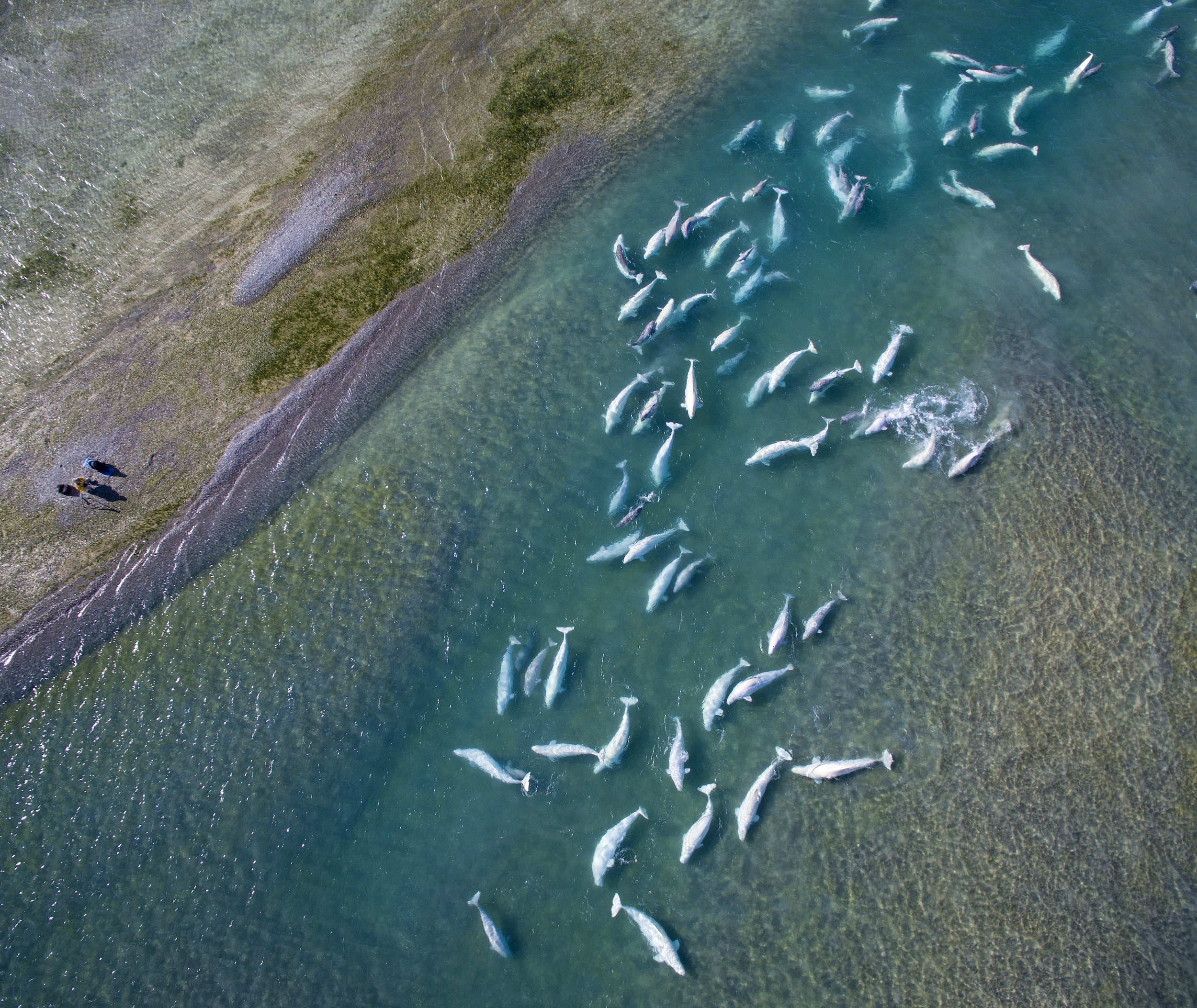
Cunningham Inlet (where Arctic Watch is located), is a destination for migrating beluga whales in the summer months. It is a "stop-over and resting point" during their annual migration. It is thought that approximately 2500 - 3000 whales will visit the inlet over the months of July And August annually. The typical whale spends between three and six days in the inlet. During peak periods, we've witnessed as many as 1500 individuals in Cunningham Inlet.
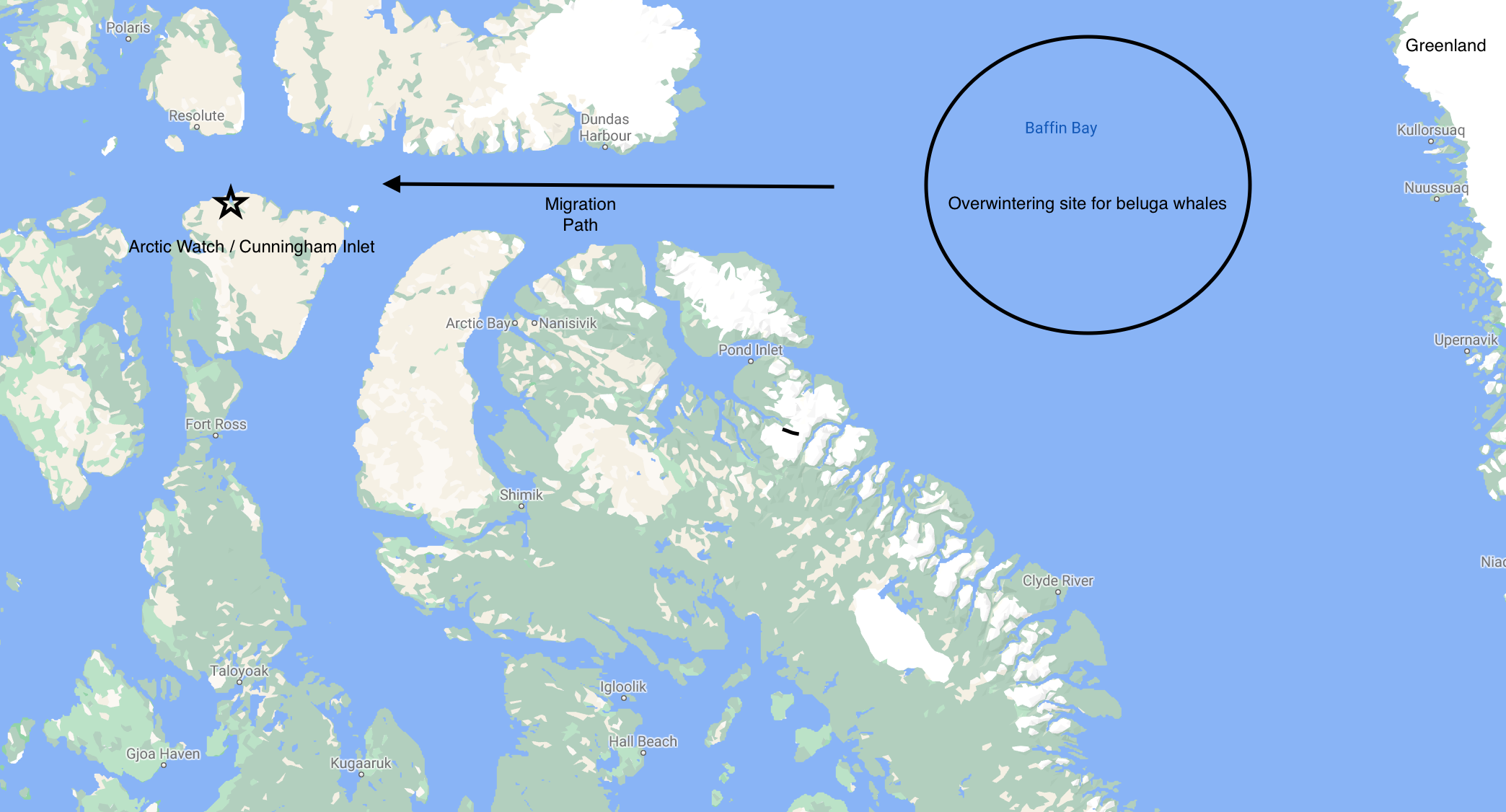
In the winter months, the Cunningham beluga population spends the season between Baffin Island and Greenland in bodies of water that don't freeze, known as polynyas. These bodies of water, surrounded by ice, create a safe environment for the belugas to spend the winter. In spring, as the sea ice melts on Baffin Bay and the Northwest Passage, the belugas follow the melting ice towards Cunningham Inlet. The team at Arctic Watch see the belugas arrive as soon as the sea ice melts enough on the Northwest Passage for them to pass. We've observed whales swimming under several kilometres of ice to reach the mouth of the Cunningham River.
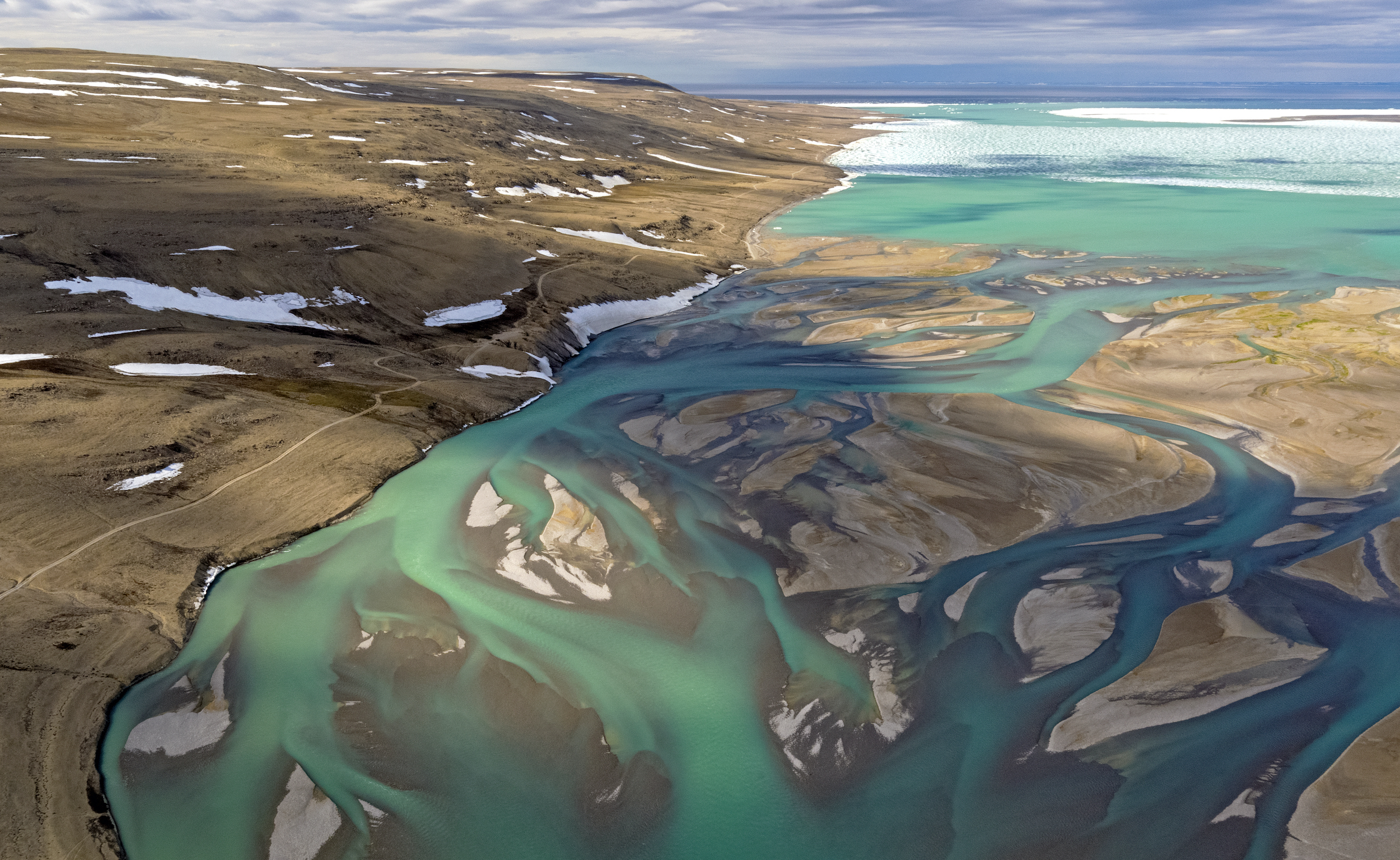
Cunningham Inlet is used by the beluga population for a number of reasons; nursing, socialization, and moulting of their skin. It's an important socialization area - mothers and calves can be seen nursing and cavorting with each other. A great example is the nurseries that form in the inlet, where one adult is observed to be taking care of multiple young whales. Adult beluga whales tend to feed outside of the inlet (in the Northwest Passage) - perhaps this is a way to "babysit" their young while the parents "grocery shop". The belugas that visit this inlet are known to eat arctic cod, arctic char, squid, octopus and shrimp.
The inlet is shallow and a large river carries a significant volume of water into the inlet. The river water, can be as much as ten degrees (celsius) warmer than the ocean. The warmer water serves as a spa-like treatment for the whales, whereby whales of all ages can be observed rubbing on the river stones, cleansing their skin or simply enjoying the warm water.
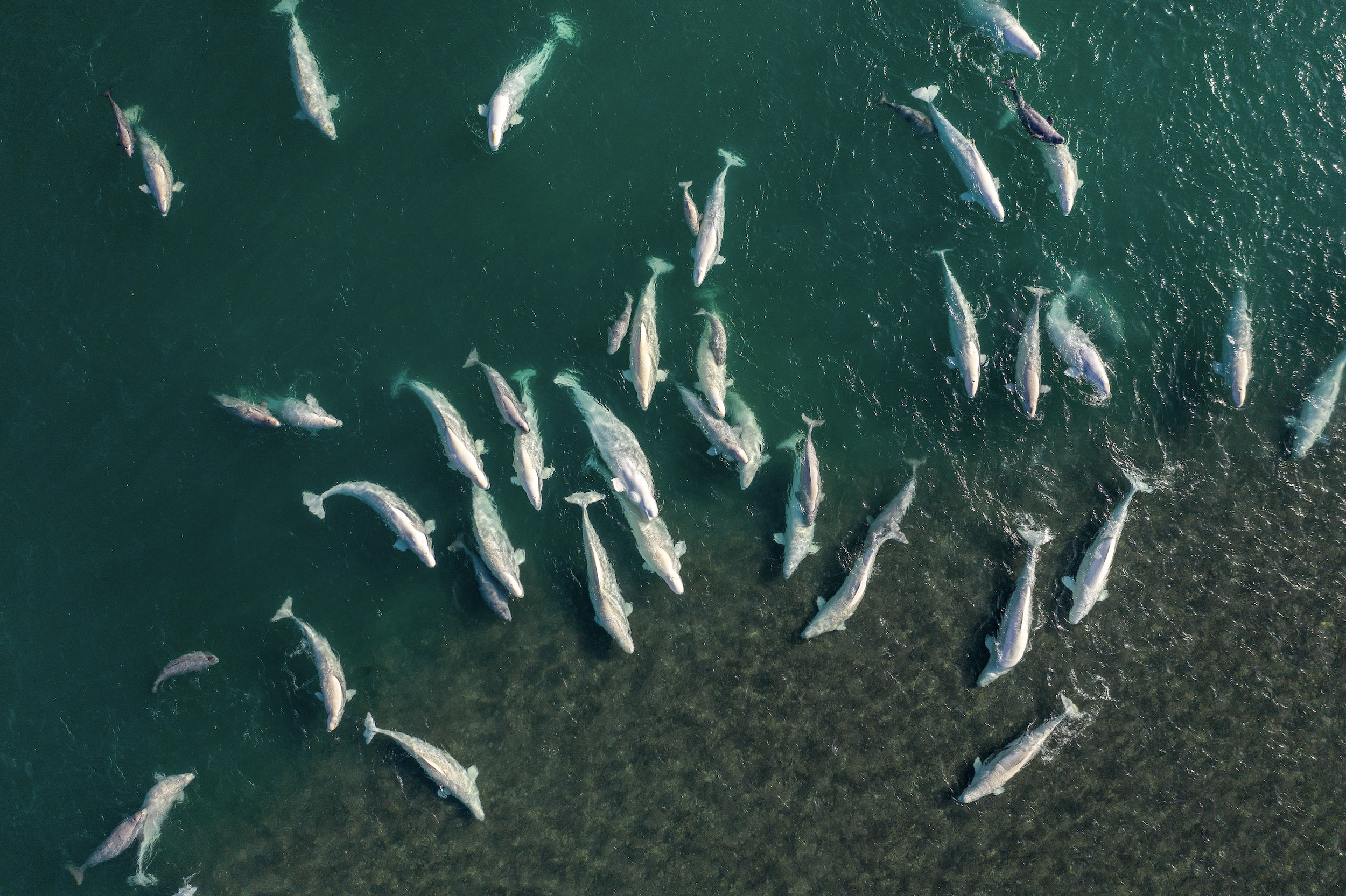
Small social groups form across the inlet - a good example is the photo below - several belugas found a tidal pool in the River, that served as a bath-tub. As the tide rose, the belugas would swim into the pool, and then spend a full tide cycle entrapped there. This behaviour was observed numerous times by the team at Arctic Watch - almost as if the whales were intentionally trapping themselves in the body of warm water.
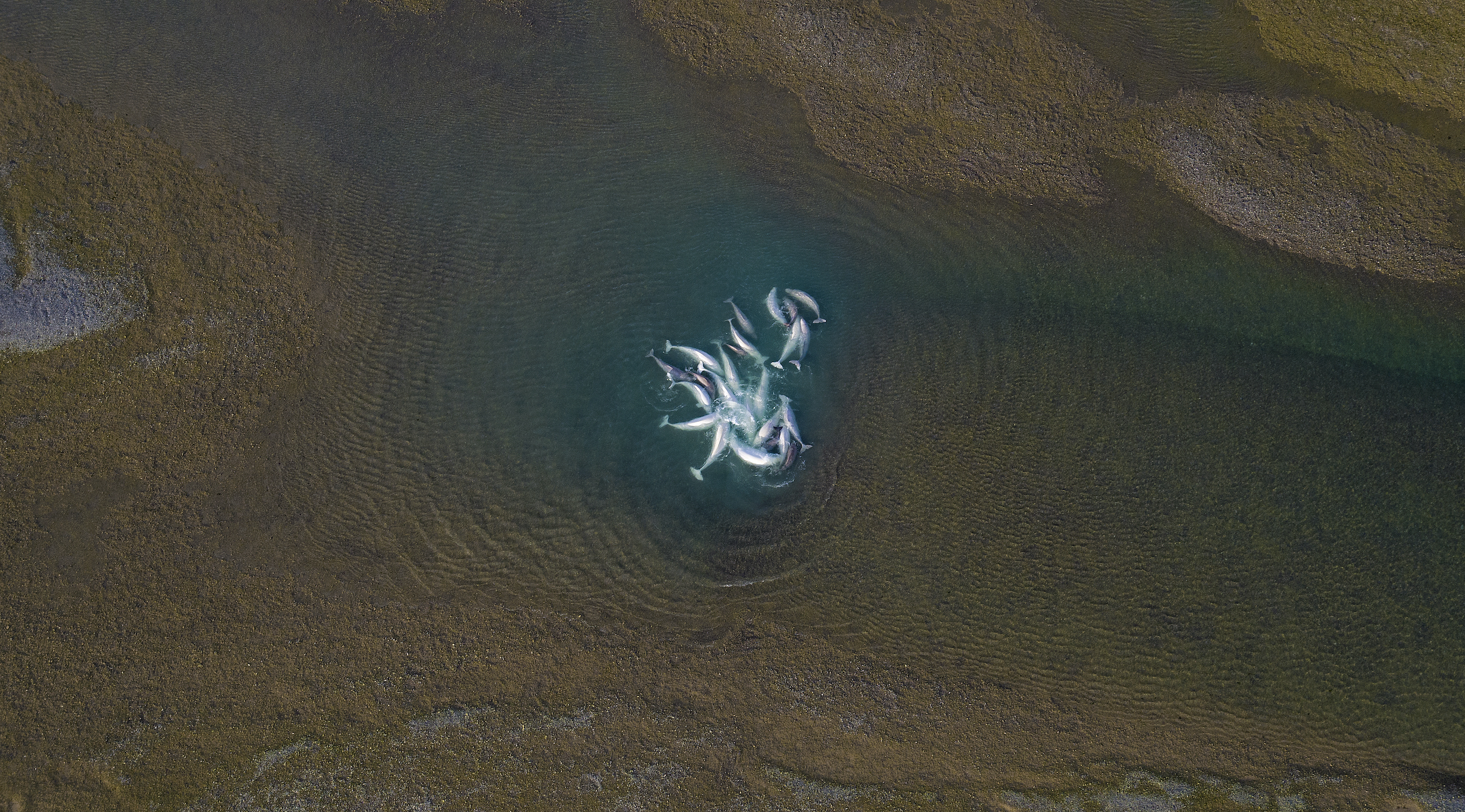
These belugas exhibit behaviour that is thought to be expressed only in Cunningham, including:
- The "caterpillar": similar to the breakdance moved called the body wave, belugas rub against the river stones in a wave like motion.
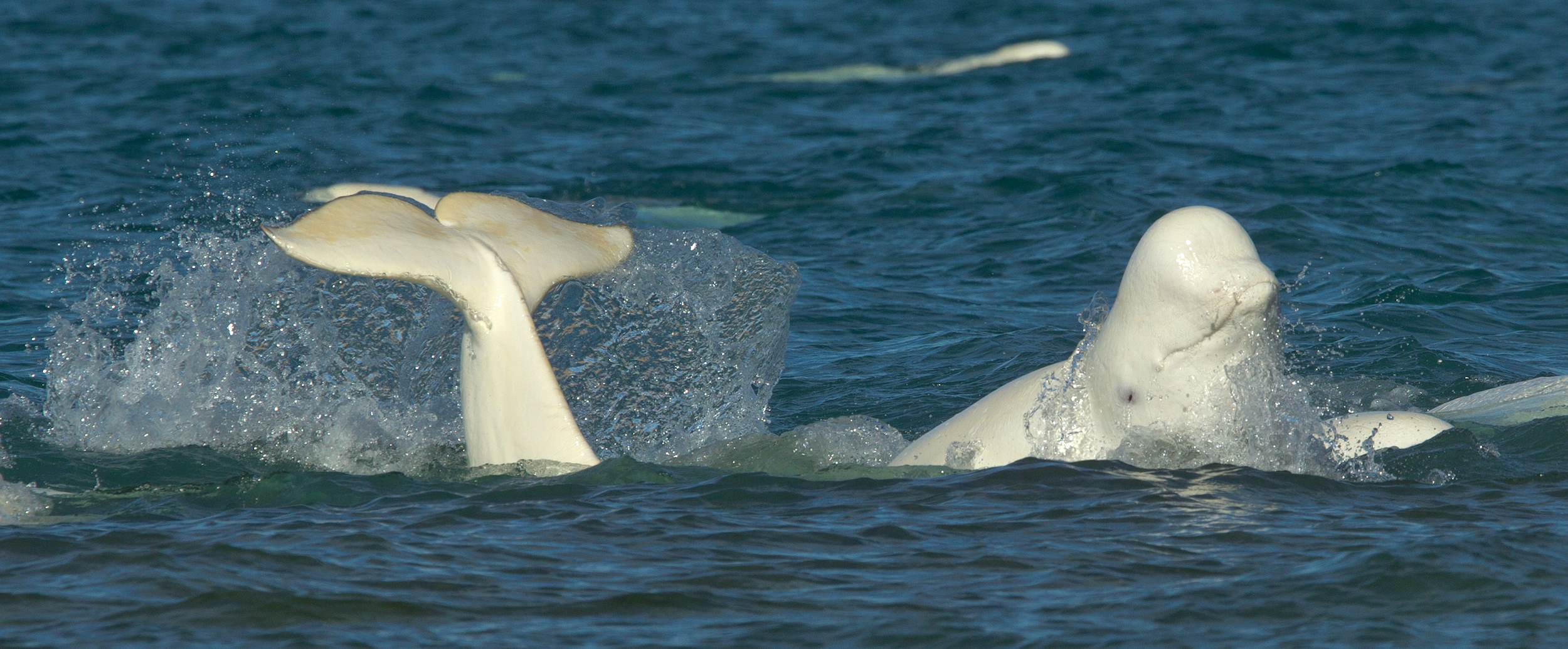
- The tail hold: belugas will park themselves in shallow water, typically against a small current, and hold their tails in the air for as much as thirty seconds to a minute.
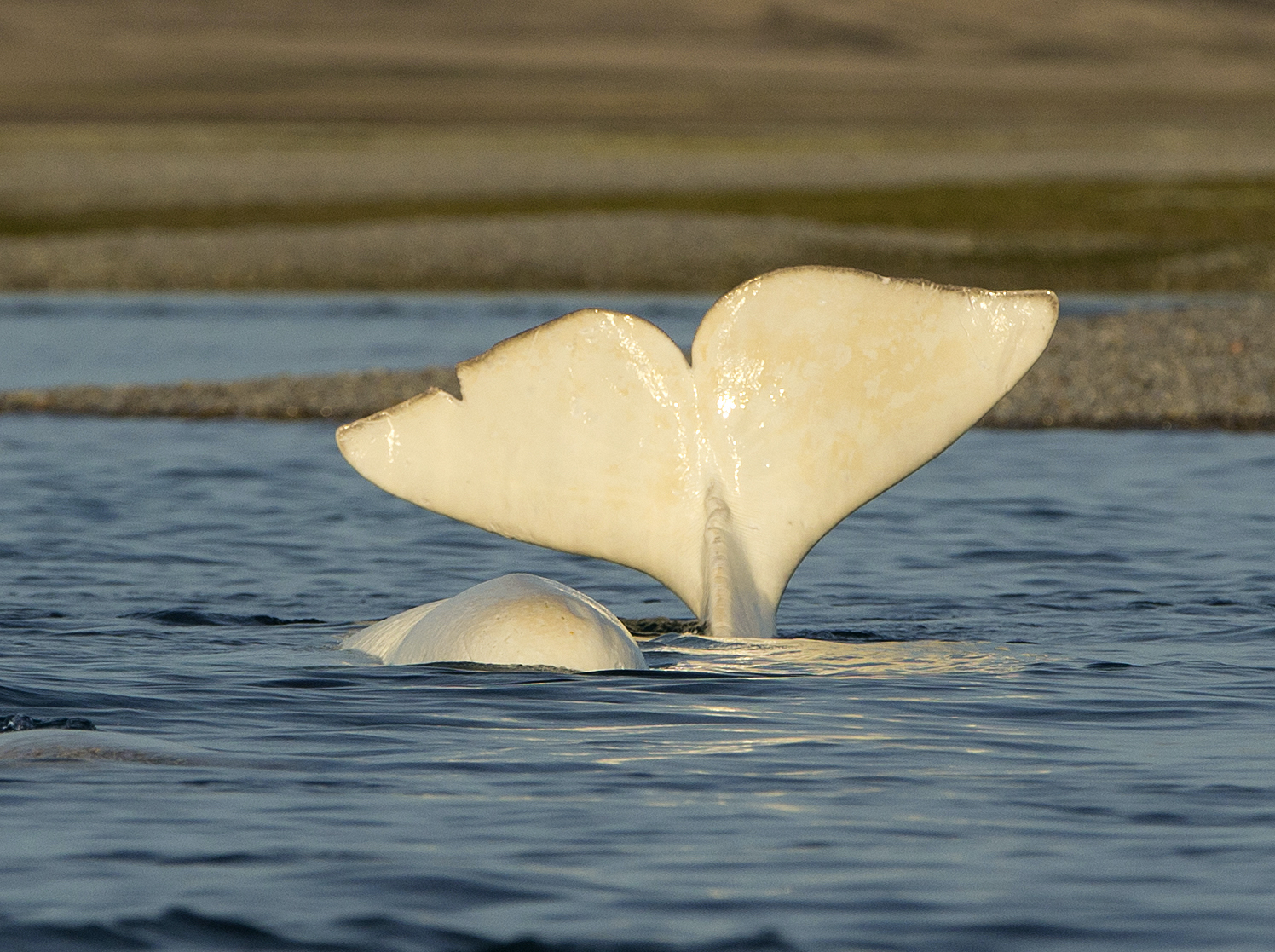
- The back rub or "crunch": beluga whales scratching their backs against the river stones in a repeated "abdominal crunch motion", almost as if to cure an "itch". These whales are likely moulting skin in the fresh water and getting rid of salt water parasites.
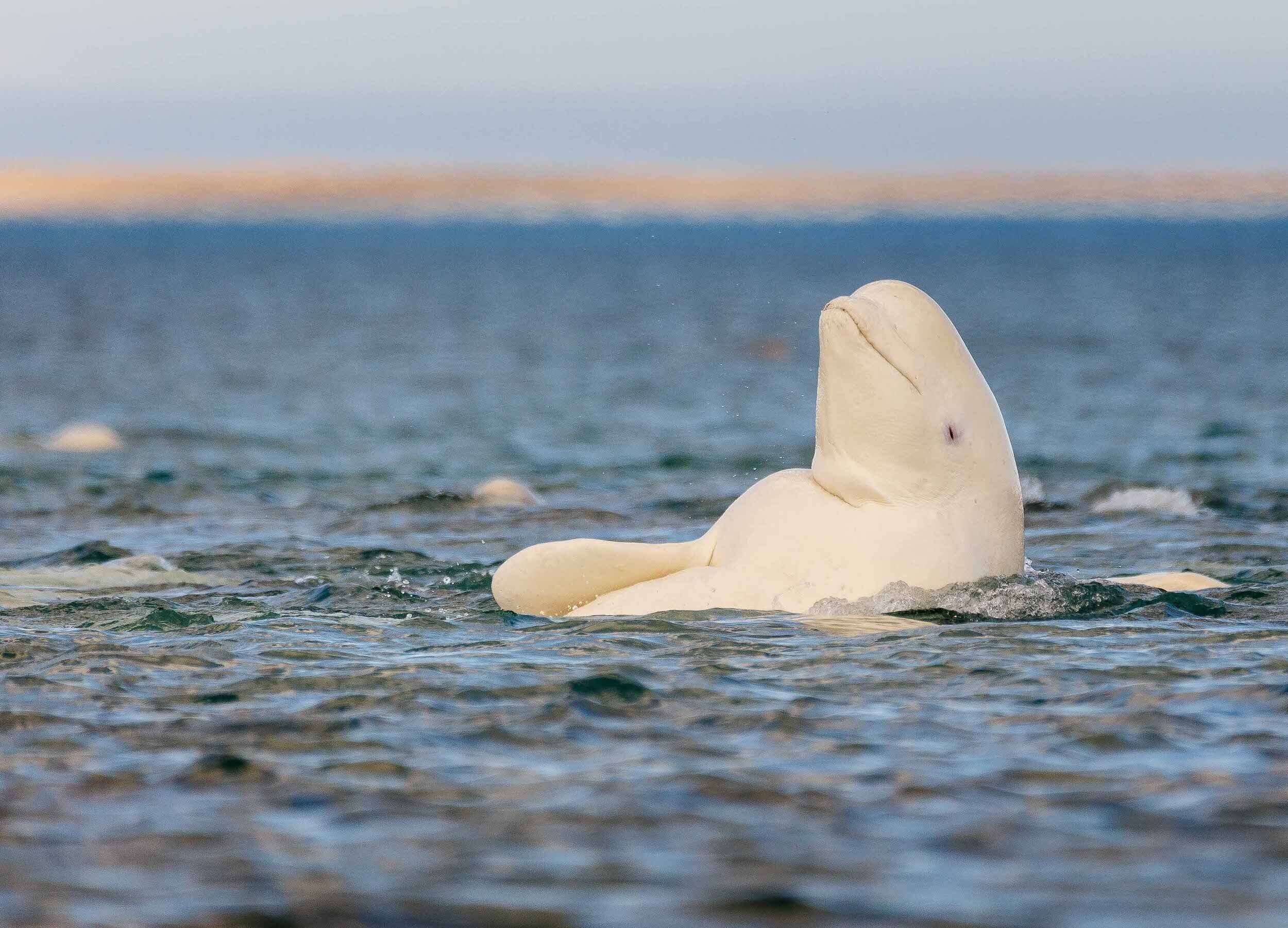
- The Banana: resting on the river bottom, a beluga will lift their head and tail out of the water repeatedly, often holding the position for five to fifteen seconds.
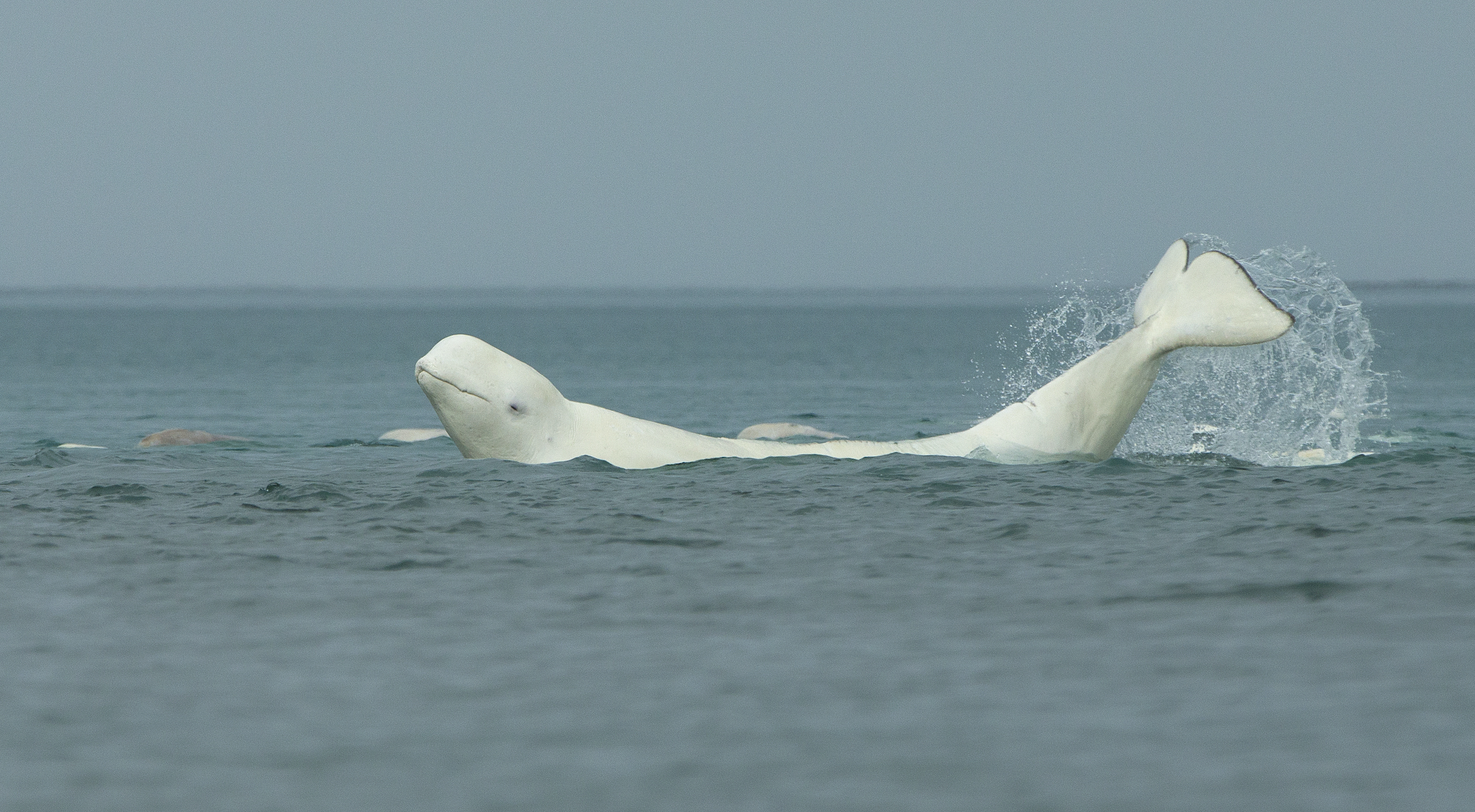
- "The observer": swimming with their heads out of the water for extended periods of time (as long as thirty minutes), the beluga whales seem to be exploring the world above water. We've watched belugas with their heads above water look at migrating birds, clouds and more. It's almost as if they're aware of the planet above them.
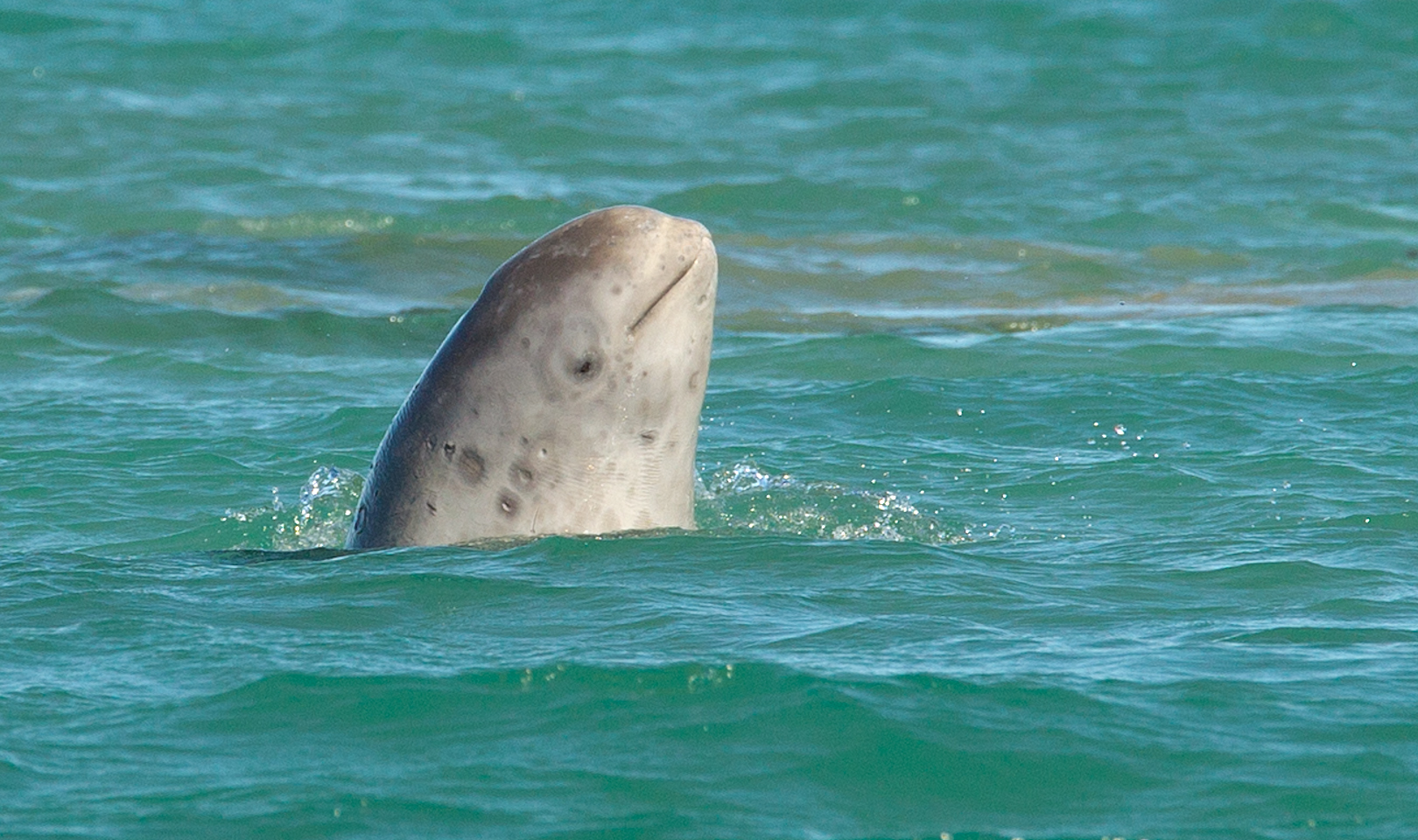
The belugas in Cunningham Inlet congregate about one kilometre from Arctic Watch, they can often be heard from the lodge in the evenings - trump noise, farts, cackles and squeals as the whales enjoy the warm waters of the Cunningham River. We encourage guests to wander down in the evenings and sit on the shoreline to watch them play! Belugas can be seen on our Arctic Watch Discovery Experience and Beluga Whale Photography Workshop.
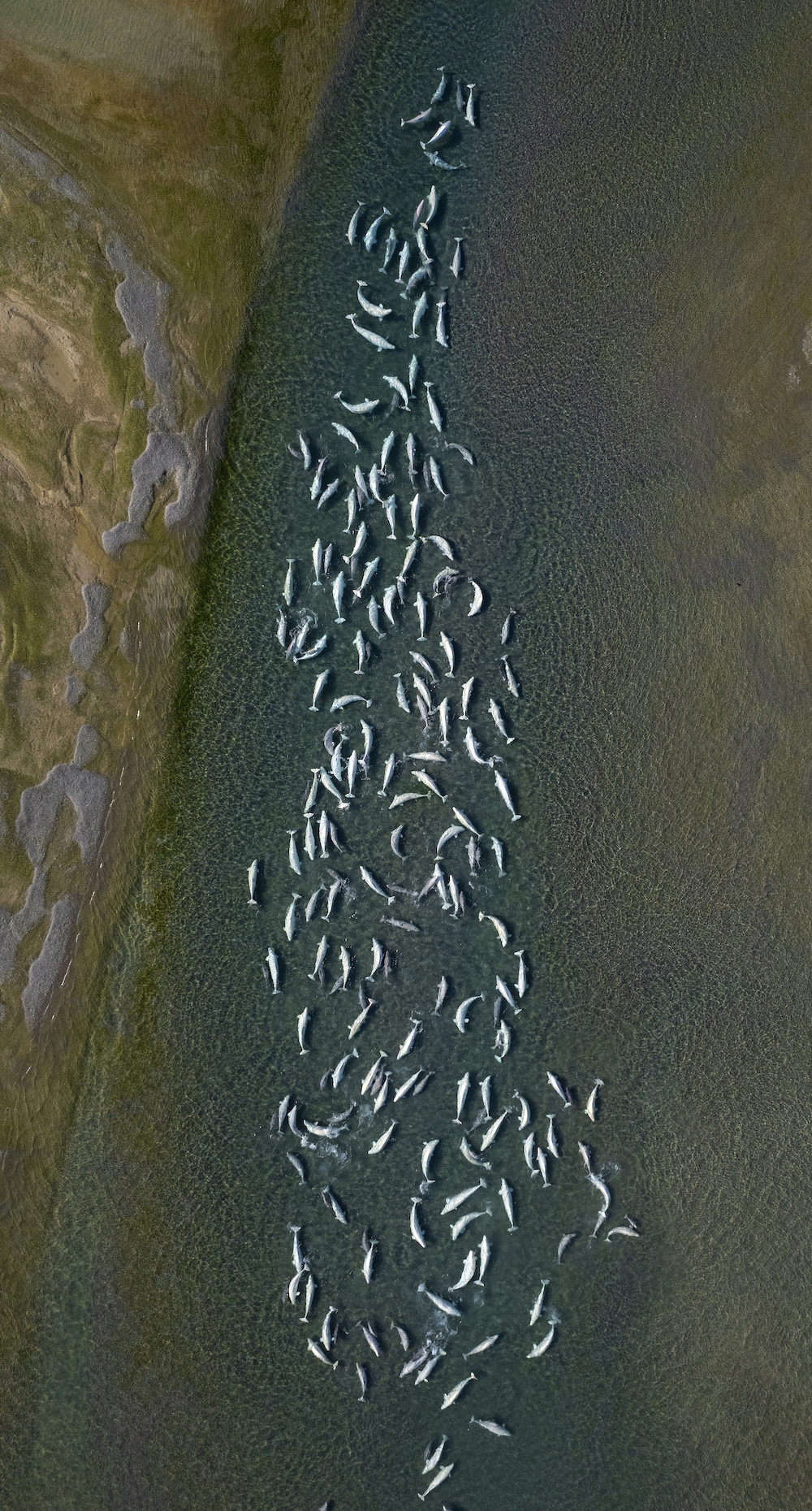
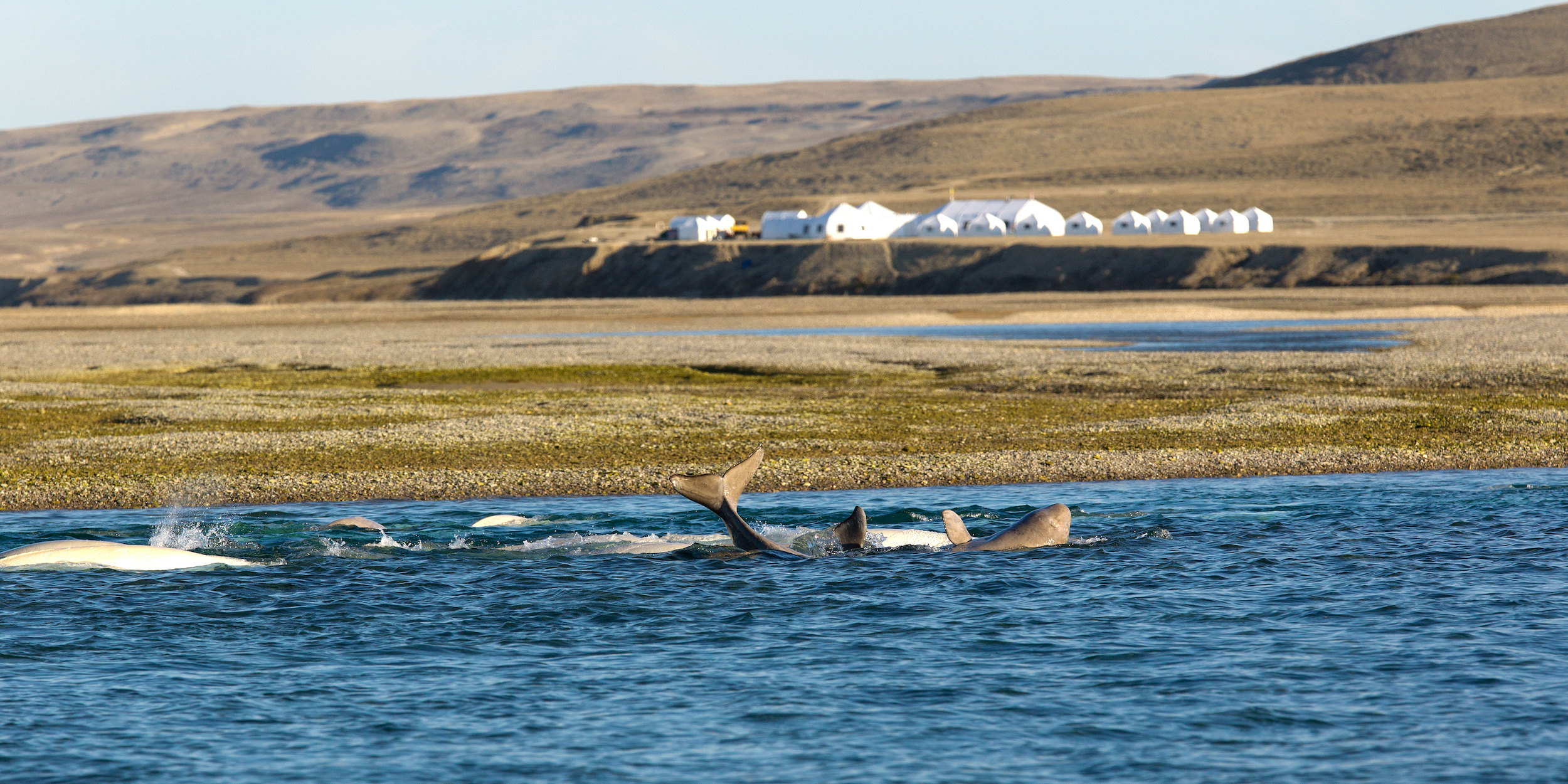
We understand that booking a trip like this is a big endeavour. Please reach out to us with any questions that you might have regarding your upcoming adventure.